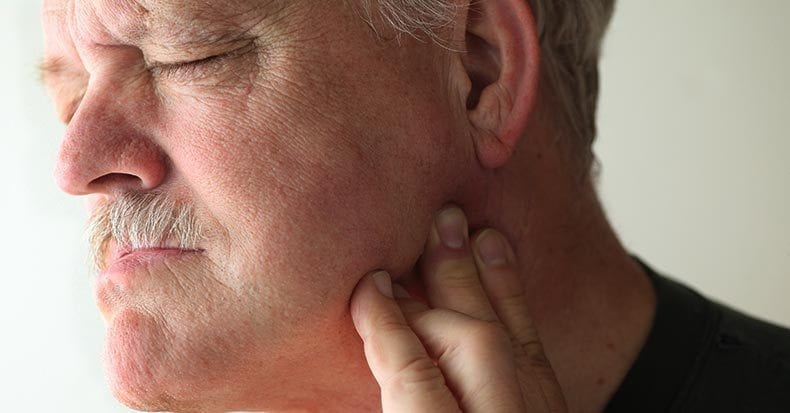Pain in the jaw joint, or temporomandibular joint dysfunction (TMD), is a common complaint for many people. In fact, a 2009 publication reported that TMD affects between 20-30% of the adult population, typically between 20 and 40 years old, and is more common in females than males. TMD is also the second most frequent cause of orofacial pain after dental / toothache pain. While acute TMD (pain less than three months) and chronic TMD (pain more than three months) are NOT considered to be life-threatening, they can significantly alter one’s quality of life and for some, can be quite disabling.
TMD can also be a sole cause of headaches for some patients. More commonly, it’s associated with multiple symptoms – most often with pain resulting from jaw movement such as yawning, chewing, and talking. Because pinning a cause on this condition can be difficult, treatment approaches can vary widely. Common treatments include the use of bite or occlusal splint, medications like pain killers and/or anti-inflammatory drugs, and psychosocial interventions such as cognitive behavioral therapy. Most studies and guidelines now suggest that a treatment approach that cannot be reversed should NOT be considered (surgery, tooth reshaping, etc.) unless more conservative approaches are tried first. TMD has been called a functional pain syndrome, a psychogenic disorder, and even a centrally mediated condition (like central sensitization with fibromyalgia). Combinations of these are quite prevalent, which can make it challenging to determine a firm diagnosis or cause. Physical trauma, such as whiplash, can cause TMD, which is then referred to as “post-traumatic TMD” (pTMD). The term “idiopathic TMD” (iTMD) is used when no known cause can be identified. The American Academy of Orofacial Pain divides TMD into two possible categories: muscle vs. joint, though a combination of the two is quite common. Others have added a “disk displacement” category to the mix due to the fact that a small disk makes up part of the anatomy of the TMJ.
As you might suspect based on the multiple potential causes and combinations, treatments addressing TMD include (but not limited to) splints, medications, physical therapy, chiropractic, osteopathic, clinical psychology, rheumatology, dentistry, and more. Dentists may commonly prescribe a mouth guard to address bruxism (grinding the teeth), which can be very helpful, especially at night while sleeping. In a recent study, the combination of soft tissue massage over the jaw closing muscles (masseter and temporalis) AND the use of an occlusal splint resulted in more pain and symptom relief compared with using either approach alone. There are several articles published regarding the use of chiropractic care in the management of TMD, especially before invasive procedures. Studies have shown that techniques including spinal manipulation and/or mobilization to the upper cervical (occiput-C1 region) are very effective, as are those that address the muscle imbalances in the TMJ, neck, and upper torso region.
We realize you have a choice in whom you consider for your health care provision and we sincerely appreciate your trust in choosing our service for those needs. If you, a friend, or family member requires care for neck pain or headaches, we would be honored to render our services.
Thousands of Doctors of Chiropractic across the United States and Canada have taken "The ChiroTrust Pledge":
“To the best of my ability, I agree to
provide my patients convenient, affordable,
and mainstream Chiropractic care.
I will not use unnecessary long-term
treatment plans and/or therapies.”
To locate a Doctor of Chiropractic who has taken The ChiroTrust Pledge, google "The ChiroTrust Pledge" and the name of a town in quotes.
(example: "ChiroTrust Pledge" "Olympia, WA")
Content Courtesy of Chiro-Trust.org. All Rights Reserved.

